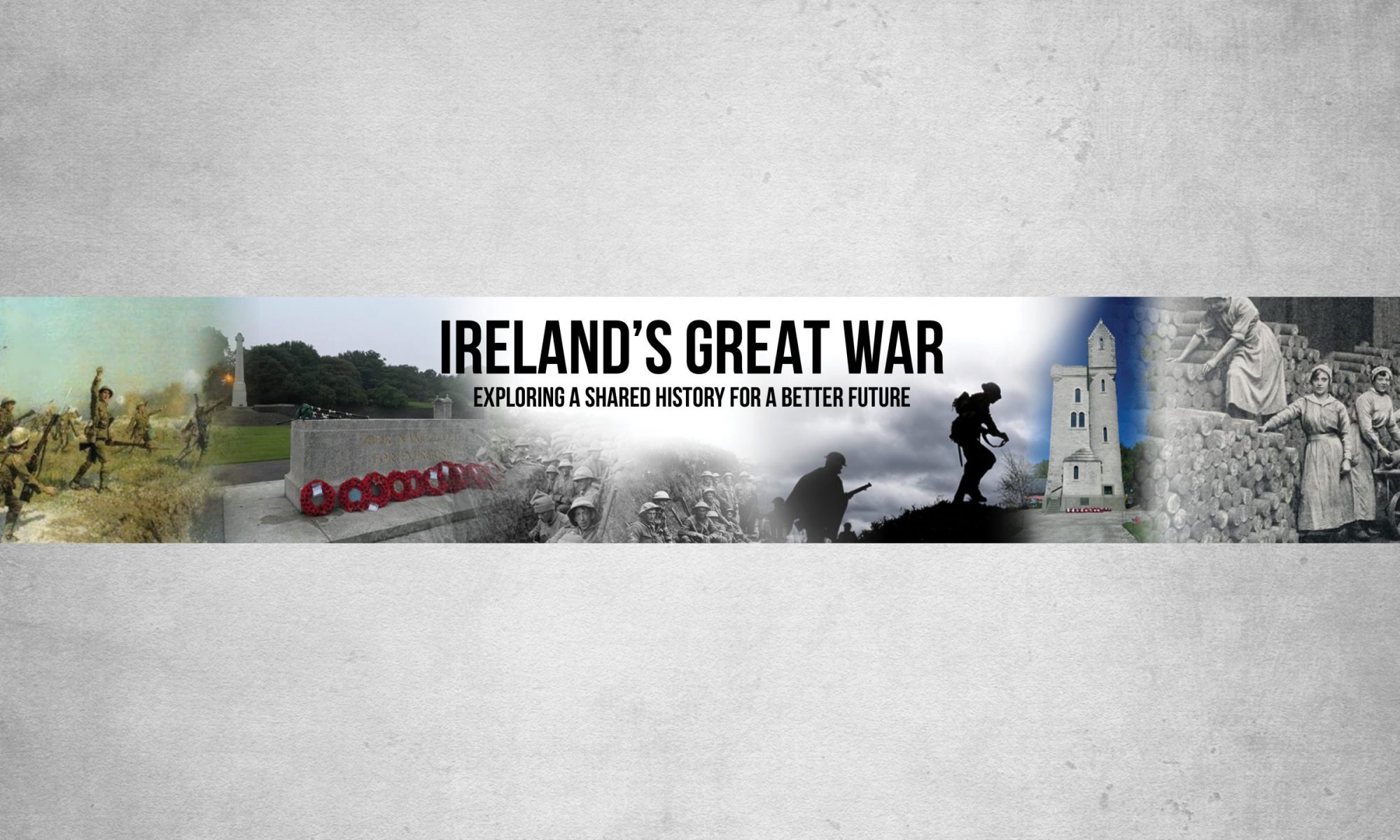Braving No-Man’s Land Sergeant Robert Quigg V.C
By Leonard Quigg/the Robert Quigg V.C. Commemoration Society (Images courtesy of the Society)
On 28 June 2016, a bronze sculpture of Sergeant Robert Quigg V.C. was unveiled by Her Majesty Queen Elizabeth II in the town of Bushmills, County Antrim. A commemorative paving stone honouring the war hero was unveiled beside the sculpture by His Royal Highness, the Duke of Edinburgh, Prince Philip.
The ceremony was the result of four years of work by the Robert Quigg V.C. Commemoration Society. The Society raised approximately £60,000, thanks to the help and support of the people of the Causeway area and far beyond. This statue will be admired by future generations and is regarded as a worthy tribute to a local man who has become a legend.

Before the First World War, Robert Quigg worked on the Macnaghten estate close to the Giant’s Causeway, Co. Antrim. When he enlisted, he served with the 12th Battalion, Royal Irish Rifles, a regiment of the 36th (Ulster) Division. Fortunately for Quigg, his platoon commander was twenty-year-old Second Lieutenant Sir Harry Macnaghten, the heir to the Macnaghten estate and a man he would have known well. On 1 July 1916, Quigg advanced with his platoon towards the German trenches through a torrent of gunfire and artillery. By nightfall, the 12th Battalion had suffered horrific casualties and Quigg learned that Sir Harry Macnaghten was among the missing.
What happened next earned Rifleman Robert Quigg the Victoria Cross, the highest military honour awarded for valour in the British Commonwealth. His medal citation reports that:
‘…..Early next morning, hearing a rumour that his platoon officer was lying out wounded, he went out seven times to look for him under heavy shell and machine-gun fire, each time bringing back a wounded man. The last man he dragged in on a waterproof sheet from within a few yards of the enemy’s wire. He was seven hours engaged in this most gallant work, and finally was so exhausted that he had to give it up’.
The last casualty that Quigg saved was Robert Matthews, from the village of Mosside, less than six miles from Bushmills.
Sadly, Quigg never found his platoon commander. Sir Harry Macnaghten has no known grave and is commemorated on the Thiepval Memorial, France; he is among 26 men from Bushmills and district who were killed on the first day of the Somme.
Robert Quigg was presented with his Victoria Cross by King George V at Sandringham in January 1917. Later in the war, he served in Mesopotamia and Egypt and he continued his army career until 1934, finishing with the rank of Sergeant.
In later life, Quigg returned to the Bushmills area and became a boatman and guide at the Giant’s Causeway, like his father before him. He died in 1955, at the age of seventy, and was buried with full military honours at Billy Parish Church, near Bushmills.
The Robert Quigg V.C. Commemoration Society was formed in October 2012 with the main objective of raising sufficient funds to erect a statue of Robert Quigg V.C. in his home town of Bushmills, in time for the centenary of the first day of the Battle of the Somme. The Society organised a wide range of fund-raising events and, thanks to the generosity of the people of Bushmills and much further afield. Over £60,000 was raised.
The sculpture was created by David Annand (www.davidannand.com). David has worked on several other high-profile public sculptures of famous people, including Robert Dunlop in Ballymoney, Co. Antrim and Todger Jones V.C. in Runcorn, Cheshire.

In July 1953, during the Coronation Tour of Northern Ireland, Robert Quigg V.C. was introduced to the new Queen and her husband at their brief stop at Coleraine railway station. It was therefore most appropriate that on 28 June 2016 Her Majesty and His Royal Highness returned to the area to put the Royal seal of approval on this tribute to Bushmills’ very own Great War hero.
28 June was a wonderful day for the people of Bushmills and a great honour for our Society that the Queen graciously agreed to perform the official unveiling. The events of the day were made even more spectacular by the presence of some 150 members of the Irish Guards – the regimental band, the pipes and drums, the regimental mascot, wolfhound Domhnall, and a guard of honour.
I was personally greatly privileged to have the honour of welcoming the Queen to Bushmills, informing the audience about the statue, and inviting Her Majesty to perform the unveiling.

The unveiled statue of Sergeant Quigg, created
by David Annand.
Her Majesty Queen Elizabeth II at the unveiling in Bushmills,
and His Royal Highness, the Duke of Edinburgh, Prince
Philip.
